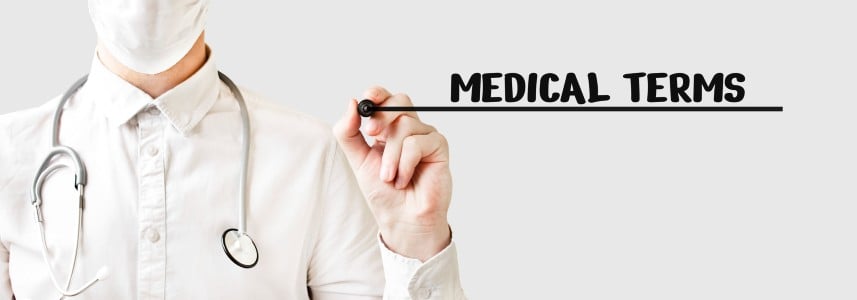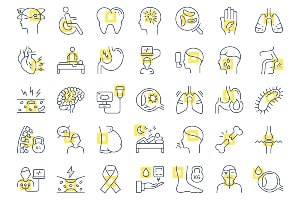About Wrist Tendinitis (De Quervain's Tenosynovitis)

Learn about the disease, illness and/or condition Wrist Tendinitis (De Quervain's Tenosynovitis) including: symptoms, causes, treatments, contraindications and conditions at ClusterMed.info.
Wrist Tendinitis (De Quervain's Tenosynovitis)

| Wrist Tendinitis (De Quervain's Tenosynovitis) |
|---|
Wrist Tendinitis (De Quervain's Tenosynovitis) InformationAre there home remedies for de Quervain's tenosynovitis?De Quervain's tenosynovitis can initially be treated with home remedies, including cold packs, resting, and over-the-counter medications, such as ibuprofen (Motrin, Advil) and naproxen (Aleve). Care must be taken to avoid reinjuring the strained tendon at the wrist. For example, young mothers must be very careful about lifting their children without straining the involved side of the wrist. Is it possible to prevent de Quervain's tenosynovitis?De Quervain's tenosynovitis can be prevented by avoiding activities that stress the wrist and avoiding repetitive motion injuries. What are causes and risk factors of de Quervain's tenosynovitis?De Quervain's tenosynovitis can be brought on by simple strain injury to the extensor pollicis longus and abductor pollicis tendons (tendinitis). Often this form of tendinitis is a result of repetitive motion injury. Typical causes of de Quervain's tenosynovitis include stresses such as lifting young children into car seats, lifting heavy grocery bags by the loops, and lifting gardening pots up and into place.Risk factors for de Quervain's tenosynovitis include the following:
What are signs and symptoms of de Quervain's tenosynovitis?De Quervain's tenosynovitis causes symptoms of pain and tenderness at the side of the wrist beneath the base of the thumb. Sometimes there is slight swelling and redness in the area. What is de Quervain's tenosynovitis?De Quervain's tenosynovitis is inflammation of tendons on the side of the wrist at the base of the thumb. These tendons include the extensor pollicis brevis and the abductor pollicis longus tendons, which extend the joints of the thumb. What is the prognosis with de Quervain's tenosynovitis?The prognosis for de Quervain's tenosynovitis is excellent. The patient can generally return to full function after the inflammation quiets down with treatment. Sometimes bracing is used during future activities that involve repetitive wrist motion. What is the treatment for de Quervain's tenosynovitis?Treatments for de Quervain's tenosynovitis includes any combination of rest, splinting, ice, anti-inflammation medication, and/or cortisone injection. Cortisone injection is extremely effective and is generally the optimal treatment. Normal activity may be resumed within three weeks after an injection. Surgery to release the tendon sheath is only rarely necessary and usually reserved for persisting inflammation after failure of at least one cortisone injection. What specialties of doctors treat de Quervain's tenosynovitis?De Quervain's tenosynovitis is commonly diagnosed and treated by primary care physicians (PCPs), including general practitioners, family medicine physicians, and internists. Specialists who treat de Quervain's tenosynovitis include orthopedic surgeons, sports-medicine doctors, and rheumatologists. Occupational therapists and physical therapists can be involved in the care of patients with de Quervain's tenosynovitis. What tests do physicians use to diagnose de Quervain's tenosynovitis?De Quervain's tenosynovitis is diagnosed based on the typical appearance, location of pain, and tenderness of the affected wrist. De Quervain's tenosynovitis is usually associated with pain when the thumb is folded across the palm and the fingers are flexed over the thumb as the hand is flexed down toward the little finger away from the involved wrist area. (This is referred to as the Finkelstein maneuver.) X-rays and other imaging tests are usually not needed to diagnose de Quervain's tenosynovitis. |
More Diseases
A | B | C | D | E | F | G | H | I | J | K | L | M | N | O | P | Q | R | S | T | U | V | W | X | Y | Z
Diseases & Illnesses Definitions Of The Day
- Noncancerous Colloid Thyroid Nodule (Thyroid Nodules) ‐ How are thyroid nodules diagnosed?, Introduction to thyroid nodules …
- Skin, Laser Resurfacing (Laser Resurfacing) ‐ CO2 Laser Resurfacing, Complications of Laser Skin Resurfacing …
- Malignant Fibrous Histiocytoma (Bone Cancer Overview) ‐ Are there any treatments or medications that relieve bone cancer pain? …
- Double Vision ‐ Is it possible to prevent double vision?, What are the symptoms and signs of double vision? …
- Ageusia (Taste Disorders) ‐ Are taste disorders serious?, Can taste disorders be treated? …
- Autism Screening and Diagnosis ‐
- Alpha-fetoprotein Blood Test ‐ In which situations are high blood (serum) levels of AFP used as a tumor marker? …
- Polymyalgia Rheumatica ‐ How do health care professionals make a diagnosis of polymyalgia rheumatica? …
- Stump Appendicitis (Appendicitis) ‐ Appendicitis definition and facts, Are there long-term consequences of appendectomy? …
- Gonorrhea (Gonorrhea In Women) ‐ Gonorrhea facts, How is gonorrhea diagnosed?, What are sexually transmitted diseases (STDs)? …